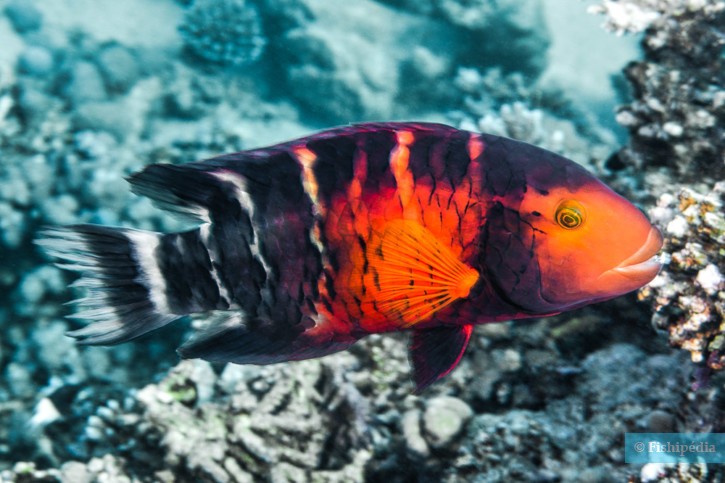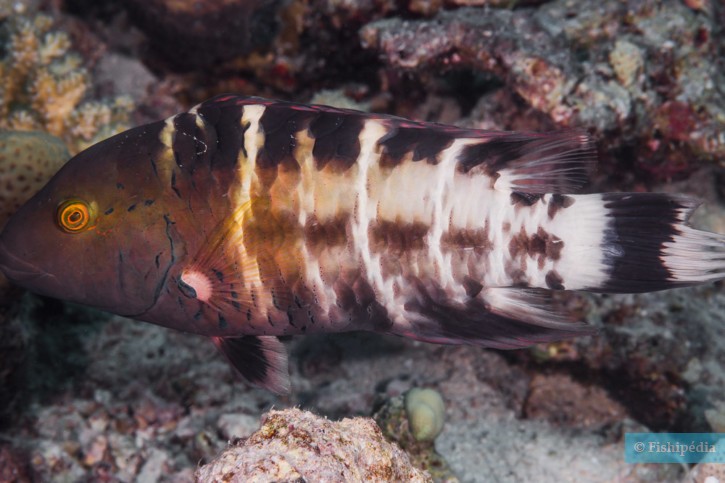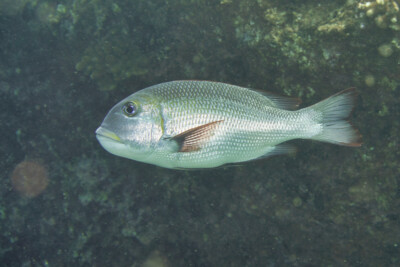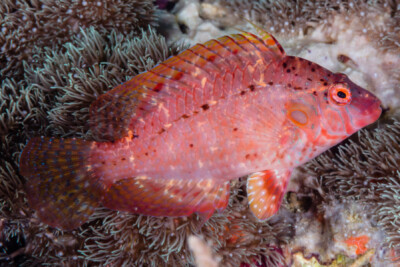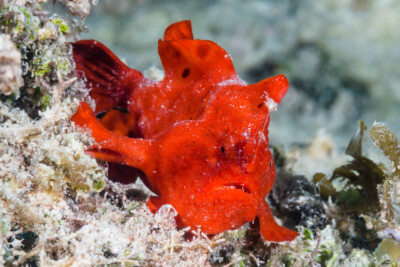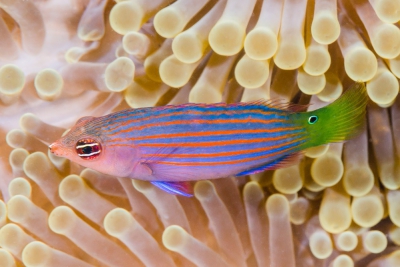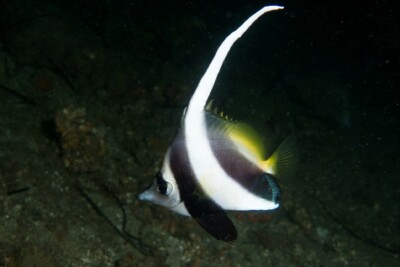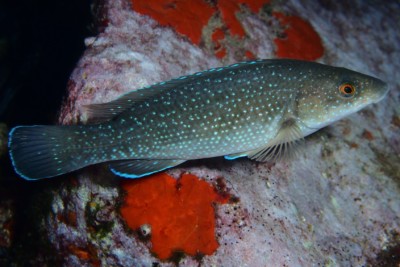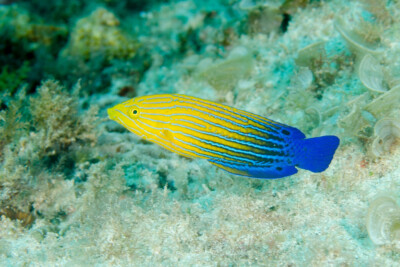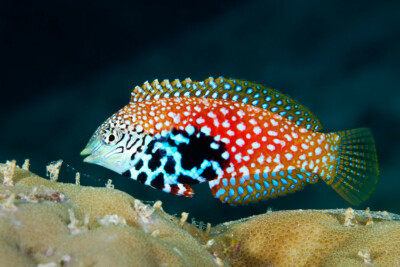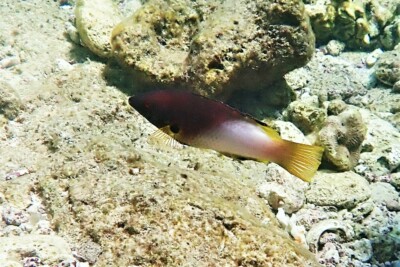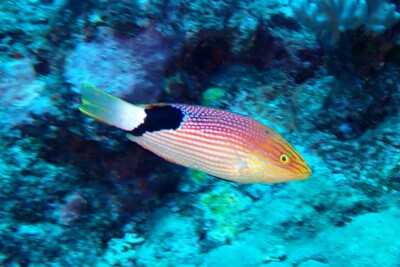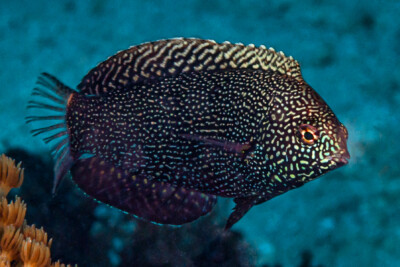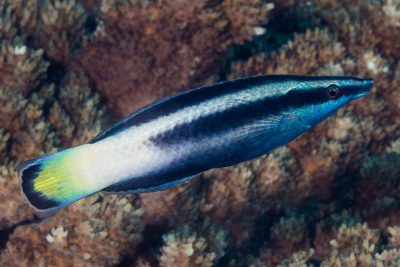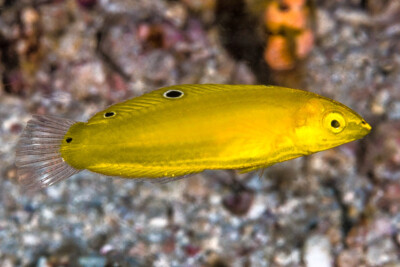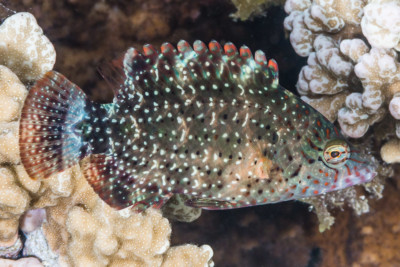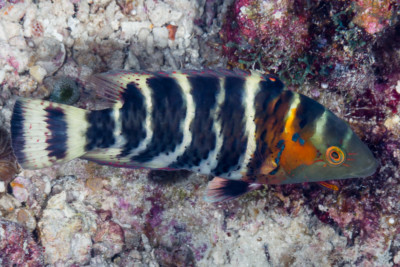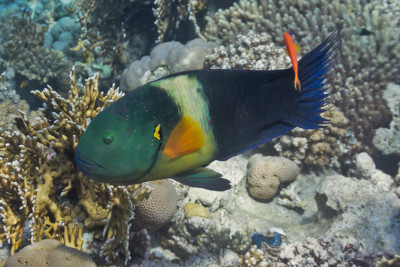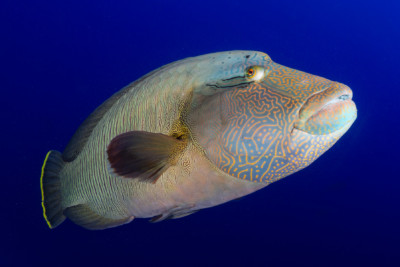Whitebarred wrasse
| Family | Labridae |
|---|---|
| Genus | Cheilinus |
| IUCN category (World) | LC |
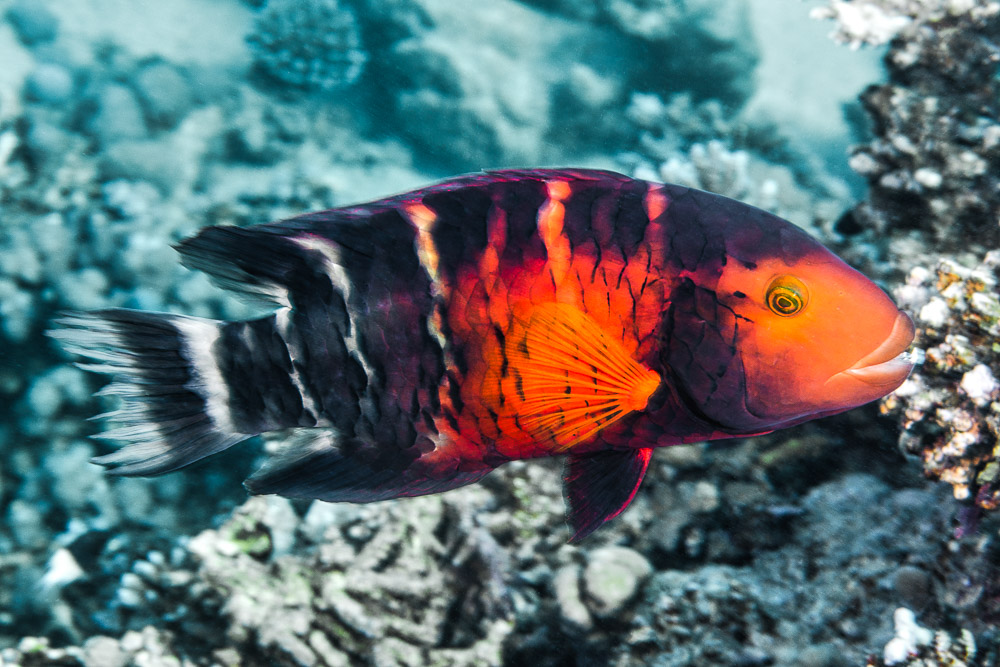

Introduction
Cheilinus quinquecinctus was long considered a subspecies of C. fasciatus. This fish, endemic to the Red Sea, is commonly known as the "Whitebarred wrasse". It is a common inhabitant of coral reefs.
Who is it?
Genus Cheilinus
These kinds of fish belong to the Labridae family, more commonly called wrasses. In this family, a phylogenetic study describes two subgroups of the Cheilinini tribe, in which genus Cheilinus is included. This genus is close to Doratonotus, Epibulus, Oxycheilinus and Wetmorella genera. Although most of the species of genus Oxycheilinus were originally classified into the Cheilinus genus, in 2020, only 7 species are officially described as Cheilinus members.
All of these 7 species are predators in coral reefs. The larger species, including humphead wrasses, are on the highest levels of the food chain. These diurnal and territorial fish are easily caught by fishermen and hunters. All species are in danger of extinction.
Their body is moderately compressed, with a length equal or superior to the head. The colored patterns on their bodies often includes distinct vertical bars or marbling, or light sparse spots. Beside the wrasse family, these fishes are regularly confused with parrot fishes, such as Calotomus, Cetoscarus or Scarus fish.
These oviparous fishes form distinct pairs for reproduction. In addition, Cheilinus wrasses are protogynous, meaning that they are born female and then some of them turn into male. While growing, juveniles change color and sometimes patterns too.
Morphology
-
Average size35 cm
-
Maximum size40 cm
-
Patternhorizontal stripes
-
Average size35 cm
-
Maximum size40 cm
-
Patternhorizontal stripes
How to recognize This fish ?
Like other species of Cheilinus, the pattern and colors of C. quinquecinctus change during growth. Each individual goes through several phases and changes sex at a certain age. Large individuals are all males.
The dorsal fin has 10 spines, with the shortest ones at the front. The body is slightly compressed and the head is broad. The mouth has prominent jaws with small conical teeth and a pair of well-developed canines. The lips are thick but not fleshy. The scales are large, cycloid, and membranous.
In juveniles, the caudal fin is slightly rounded. They are brown with five white bars across the body. In younger individuals, these bars are bordered in dark red. The first bar is wider and brighter than the others. The third bar starts at the end of the seventh ray of the dorsal fin and ends on the second anal fin. All bars, except the second, continue onto adjacent fins.
There is also a narrow white bar at the base of the caudal fin. A half-white bar is present above the eye, and spots of the same color are visible on the head. These disappear as the fish grows.
Sexual dimorphism
Males are indeed larger than females.
Females and subadults have a pattern similar to juveniles, with five white bands. However, the second band is very visible and almost reaches the dorsal fin, unlike in younger individuals. The operculum is surrounded by bright turquoise blue. A large orange spot forms a line extending from behind the eye. Upon closer inspection, small black spots can be seen on the head. The caudal fin is truncated.
Males have a dark brown body. Over time, the orange spot intensifies and completely obscures the initial white bars. These become diffuse. The spot eventually extends over the head, encompassing the eye and snout. The dorsal fin is infused with blue, with two distinct red stripes. The key distinguishing feature between male C. quinquecinctus and C. fasciatus is the jagged appearance of the caudal fin in C. quinquecinctus. Other features include in C. fasciatus, the spot is red-orange and does not extend beyond the first white band; the eyes have a red iris; black spots are visible above the red spot.
Behaviour & Life cycle
-
dietcarnivorous
-
Sociabilityliving as a couple or alone
-
territorialYes
-
Way of livingdiurnal
Adults, particularly males, are seen solitary in sandy areas near coral reefs. Larger individuals swim along outer reefs.
Juveniles are more discreet and remain near cavities where they can quickly find refuge in case of danger. They can easily be mistaken for other juvenile wrasses, especially those belonging to the genus Wetmorella.
This species primarily feeds on benthic invertebrates, such as crustaceans and mollusks.
Reproduction
-
Reproductionovipare qui pond en eau libre
-
Hermaphroditeprotogynous
This oviparous fish spawns in pairs in open water. Like other species in its genus, individuals are always born female.
Harmless species
This species does not represent any particular threats to humans when encountered in its natural environment.
Origin and distribution
Conservation status of populations (IUCN)
What is its habitat?
Natural environment characteristics
-
Temperature25 - 30 °C
-
Depth1 - 25 m
Biotope presentation
This species is found in coral areas between 2 and 40 meters in depth.
Species of the same biotope
Fishkeeping
Not recommended
We do not recommend keeping this species in an aquarium. It has unpredictable needs which, if not met, generate significant stress, potentially leading to a shorter life expectancy, an interruption of its growth or the development of pathogens.
To go further
Sources & Contributions
Participation & Validation
The Fishipedia team and specialist contributors are committed to providing high-quality content. However, although the information comes from scientific sources or testimonials from specialists, the cards may contain inaccuracies.

Benoit Chartrer
Translation
Translation done with the valuable contribution of our translators, who make this information available to a wider audience. We sincerely thank them for their commitment.
Bibliographic references
- - GBIF
- - LABRIDAE - FAO Fisheries Synopsis - 1998.
- - Redescription of Cheilinus quinquecinctus Rüppell, 1835 (Pisces: Perciformes, Labridae), a valid endemic Red Sea wrasse - SERGEY V. BOGORODSKY - TILMAN J. ALPERMANN - AHMAD O. MAL - ZOOTAXA - 2016.
Scientific partners
Species of the same family
Same genus
Species of the same biotope
